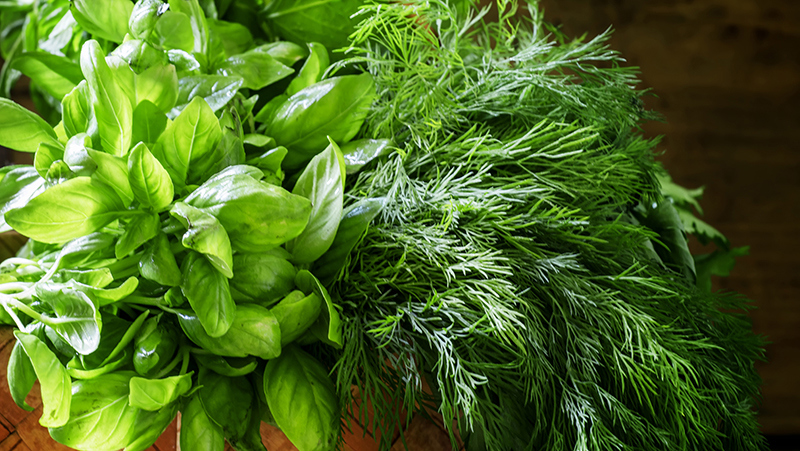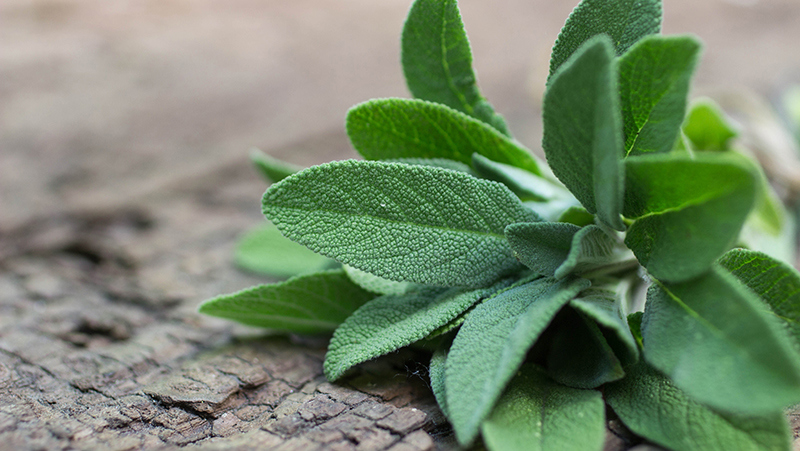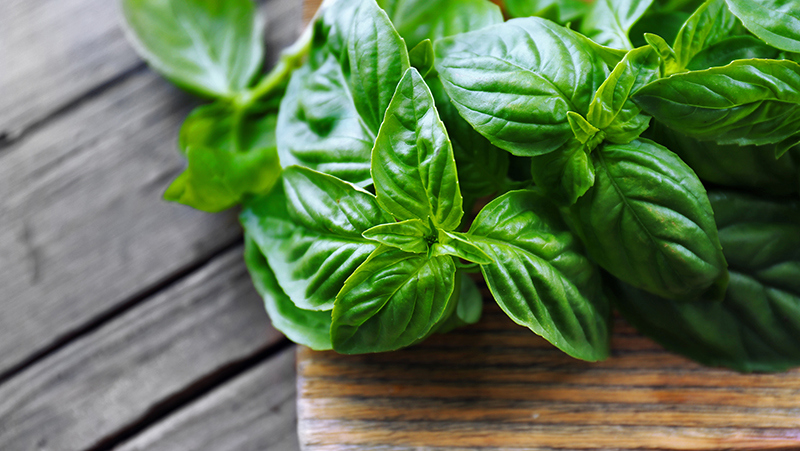Yates Account
Join now
Create a Yates account today!
Sign up to join the Yates Garden Club for monthly e-mails packed with seasonal inspiration, tips for success & exclusive promotions.
Plus if you’re a Garden Club member you can take part in the Yates Growing Community - a blog to share successes, get advice & win prizes in fun challenges along the way!

Forgot password
Enter the email address associated with your account, and we'll email you a new password.
With spring in full bloom, now's the ‘thyme’; gather your pots and get sowing. But with so many herbs to choose from, where do you start? We've combed through our gardens, road-tested a few delicious dishes and come up with our ‘Top 10 Herbs’ that you absolutely need in your garden, and your life.

Chives
Get your ‘chive on’ with this handy little herb. Not only is it easy to grow and care for, chives provide a refreshing flavour to your morning scrambled eggs (yum!) or a light onion taste to your salads – without the onion breath.
Another benefit of this zesty plant is that it's a great source of potassium, magnesium and vitamins A, C and K. So it tastes great and it can help get your body into the groove – what a bonus! Try growing chives at home with our simple how to grow guide.
Oregano
No kitchen garden is complete without oregano. Just the mention of oregano makes us think of delicious pastas, rustic Greek salads and of course, pizza!
We now have Heirloom Oregano True (AKA Greek oregano) for our more discerning cooks. Some say it has the best flavour of all oreganos, who are we to disagree?
Oregano can handle a bit of neglect, making it perfect for terracotta pots or hanging baskets. Just give it plenty of sun, a good regular feed with Yates Thrive Natural Fish & Seaweed+ Plant Food Concentrate to promote healthy and aromatic leaves. You can check out more hints and tips on how to grow oregano with our great how to grow guide.
Parsley
All gardens need a hero plant; out of all the herbs, parsley stands tall above the rest (literally and figuratively!). This herb is used around the world in salads, pastas and soups – actually, any dish that really takes your fancy!
It’s super easy to grow. Position in full sun to part shade, with a well drained soil filled with rich organic matter. Sow seeds, lightly cover with soil and water in well. As the seedlings grow, keep them healthy with a weekly feed of Yates Thrive Natural Fish & Seaweed+ Plant Food Concentrate. This builds their strength and helps them be the superhero that they truly are!
For further details on how to get your parsley growing, check out our growing guide.
Coriander
This is the herb that divides the nation. For those who are not overly fond of the taste of coriander (we understand, it’s all because of your genes), we have included a few ‘alternatives’ for you to grow in your garden that can be found at the end of this section. For those who absolutely love coriander, read on for information on this excellent herb!
Both the leaves and the seeds can be used in cooking, making coriander incredibly versatile. If you love it, think about sowing new seeds every couple of weeks; this makes up for coriander's naughty habit of quickly bolting to seed in hot weather. It also really helps to grow it in a lightly shaded position over the warmer months. Luckily, Yates Coriander is a slow bolting variety, which allows you more time to enjoy plenty of fresh leaves during the growing period. For more information on how to get the most out of your coriander click here for our growing guide.
Coriander alternatives? If adding coriander to your meals or garden just gives you nightmares, we are here to help. Although there is nothing that exactly mimics the taste, there are some alternatives that you can try. Parsley is a go-to alternative to add to dishes, while the flavour profiles of cumin and dill usually work with dishes that call for coriander. Or, try using celery leaves in dishes. Celery leaves have a similar texture to coriander, but without the coriander taste.

Sage
What’s not to love about this herb? Flowers – tick! Flavour – tick! Easy care – tick! Bee friendly – tick, tick!
Sage is a great herb to have in the garden. The red flowers and its easy-care nature makes it perfect for kids to grow and care for. Pineapple sage is also a winner for kids.
For the adults, you can’t go past sage in the kitchen, think burnt butter and sage gnocchi – we are just drooling at the thought of this lovely dish!
Grow in full sun and water regularly. Want to know how to best grow sage? Read On!
Mint
With so many mints to choose from, which one is best for your garden? Before you settle, think about how you'll be using it. Standard mint is great for adding a tangy taste to a chocolate tart, salad or even a cheeky little mojito.
For something a bit different, look at chocolate mint. It has a very slight cocoa taste to it and it’s not as potent as other mint varieties. For soothing teas, look at peppermint - just pull off the leaves and let it brew for a while.
If you enjoy Asian cuisine, you can’t go past Vietnamese mint. The leaves add another dimension to your dishes, with their taste and distinctive appearance.
Regardless of the variety, mints are best grown in pots as they can go a bit wild if left unattended in the garden. They love full sun to part shade and a good well-drained soil. Vietnamese mint prefers a slightly wetter soil than their minty cousins and they can’t handle being dry, so ensure that you water them well.
If you can’t decide which mint is your perfect match, just grab pots and grow them all!
Thyme
For those who are 'thyme' poor, this herb is a great one to grow, even just for the atrocious puns! There are many varieties to choose from, including the standard garden thyme, lemon thyme or popular pizza thyme.
All varieties of thyme love full sun and can be planted pretty much anywhere you desire, from a pot, hanging basket or even between pavers. Use creeping thyme as a sprawling ground cover or alternative to lawn and enjoy the scented goodness as you wander barefoot around the yard. Check out our how to grow guide for more tips and tricks on getting your thyme working for you!

Basil
Another must-have in the herb garden. Basil is universally adored in pastas, pizza, Asian cuisine and many more delicious meals! For the classic everyday basil, you can’t go past Sweet Basil. They’re great for placing on top of your pastas or bruschetta with diced tomatoes and garlic.
Genovese Basil is the one to go for if you want to make pesto, it's very aromatic. Pair it up with fresh mozzarella and juicy tomatoes for an absolute treat for the tastebuds.
Thai Basil is a delicious choice for South-East Asian style dishes and adds x-factor to a green or red curry.
Basil is easy to grow from seeds or from cuttings and is a great mate to tomatoes as well. So what are you waiting for? Get planting today! Click here for the growing guide.
Rosemary
If you struggle to keep herbs alive, you need to have this one in your corner. Rosemary is tough, hardy and can deal with neglect, all while adding great flavour to your meals. You don’t have to grow rosemary just for cooking, it is great to grow as a hedge just for the lovely scent that the leaves produce when crushed.
If you strip off fresh rosemary leaves and sprinkle them onto an oven tray of roasties, your kitchen will smell like heaven (and your roasties will taste like heaven).
If you needed another reason to get the rosemary going at your place, when in flower, the bees absolutely love it! Click Here for our Growing Guide.
Lemon Balm
If you have never heard of lemon balm before, it is time to check this herb out. It is so simple to grow from seed and provides a wonderful light citrus flavour to any chicken, fish or pork meals.
Not only great in dishes, it is fantastic for herbal teas, tasty summer drinks and jellies. If we've piqued your interest, give this herb a go! Check out the growing guide here.














Share
Share this article on social media